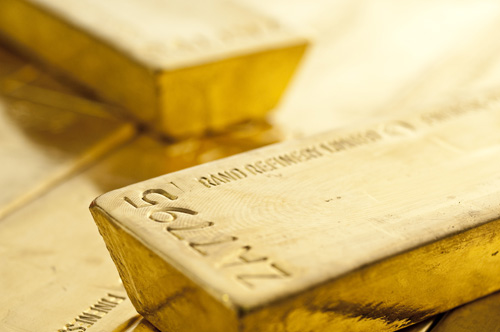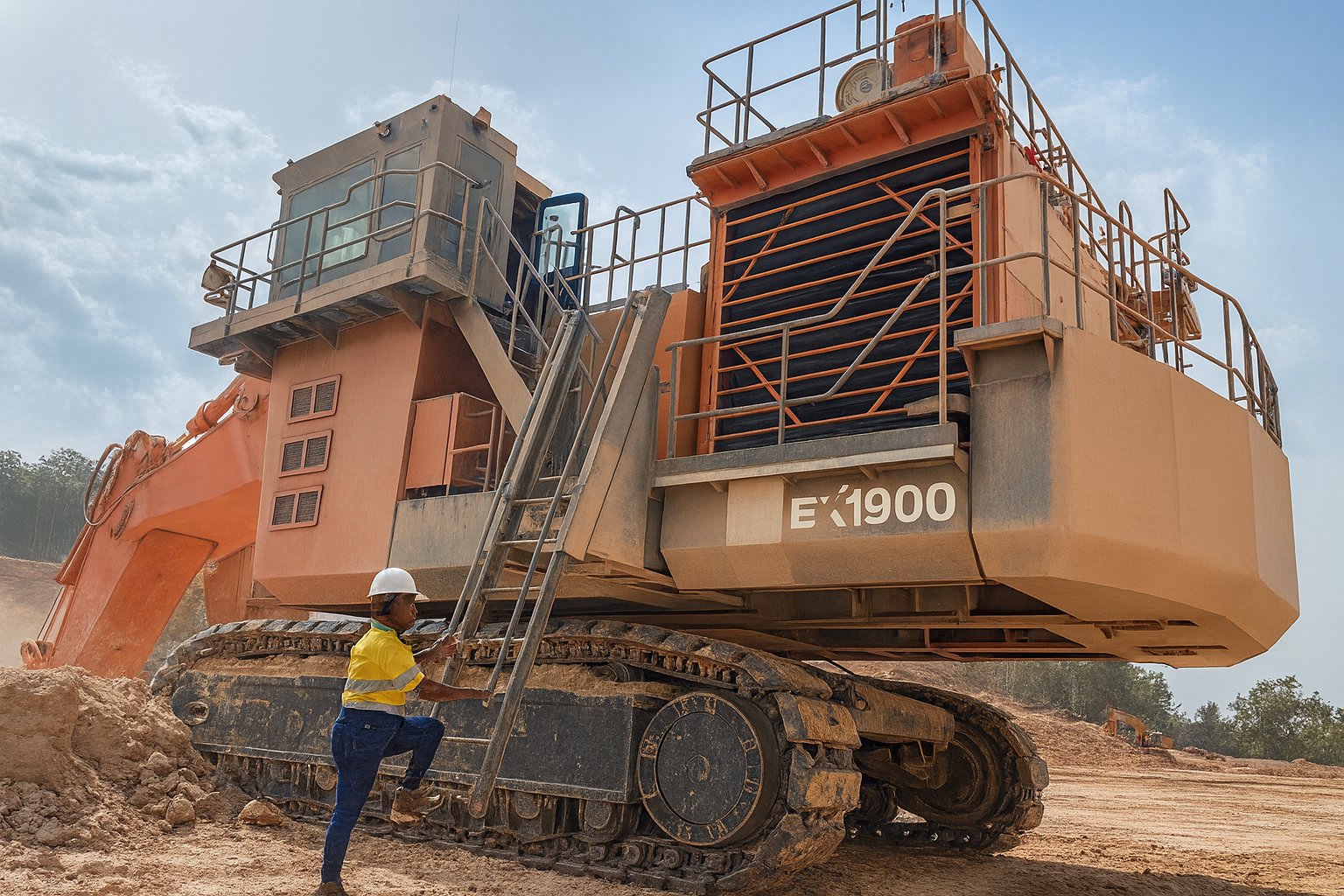
Howard Craig was brought in from the oil and gas industry over three years ago: his mission to breathe new life into one of South Africa’s key businesses. Rand Refinery, since 1967 the sole producer of Krugerrands and gold bars destined for the bullion banks of the world along with gold bars, is the pipeline to the market for the greater part of Africa’s gold doré – the semi pure product from the mines. Two of the largest gold mining companies in the world AngloGold Ashanti and Gold Fields between them own over 80 percent of the company: the remaining shares are held by DRDGOLD and Harmony.
After 90 years the company found itself with sound but outdated processes and equipment, and faced new realities as well as changes in the global market for precious metals and the products made from them. “The first thing that needed doing,” he says, “was to establish where the company was headed, then decide what should be done to get there.” It was clearly important to make the operations sustainable: much of the technology used in the refinery itself, the smelter, the mint and the assaying operations was outdated. The shareholders were keen to invest in automation, and the brand was ripe for a makeover.
It was, he says, every CEO’s dream, and today his relish for the task remains palpable. The intervening years have been spent putting this policy into practice, acquiring the best available technology and at the same time matching the company’s skills levels, enabling systems and culture to create a new brand identity that, while retaining the core competence of refining, would be ‘instantly recognisable as a symbol of infinite quality, sophisticated simplicity and unquestionable integrity.’
Though the market for gold and precious metals has shifted eastward in recent years, it is still centred in London, where in May this year alone gold to a value of $39.8 billion was traded, and $3.28 billion of silver. This trade is handled by the London Bullion Marketing Association (LBMA), with which Rand Refinery has been accredited since its inception in 1920. In 2004, that relationship was elevated when Rand Refinery was appointed one of five referees that monitor LBMA’s Good Delivery standard introduced in 2001, and authorise new refineries to trade, set the standards for the market and evaluate them technically.
There are just five Good Delivery referees in the world and Rand Refinery is the only one in the southern hemisphere. It was a huge testament to the standing of the company and its reputation in the industry. “Being an LBMA Referee is something we cherish,” says Craig, “but it brings with it a massive responsibility. We have to make sure our own technical standards are at the very top of the tree, and always set the benchmark for honesty and integrity in the industry. We look on that reputation as a gift from our former employees and management over the years, and we nurture that heritage and aim to pass it down to the next generation.”
Till last year only the bullion banks could be full members of LBMA; refineries had associate membership. However in May 2012 the five referee companies were admitted as full members, a singular honour. He talks about the responsibility of LBMA membership, and it is true that a lot of pro bono work and travel is involved. That is not a problem for Howard Craig. One of the key roles of the referees has been to develop with the LBMA a set of guidelines on responsible gold. Since January 2012, the LBMA requires that all Good Delivery gold refiners comply with the LBMA Responsible Gold Guidance, formulated to ensure that conflict gold, or gold produced using unsafe practices, child labour or human rights abuses did not enter the supply chain. As the processor of up to 80 percent of all the gold mined in Africa Rand Refinery took a proactive part in the process. “We got in touch with the World Gold Council to understand the miners’ point of view, the OECD which had published its own guidelines, and, for the downstream trade, the Responsible Jewellery Council.”
There’s an element of self interest here, he admits. The concept of conflict gold has its roots in Sierra Leone and the DRC, but it is vital that the whole of African doré production is not stigmatised. Rand Refinery has long had its own systems to monitor its customers and track every batch they send, using third party auditors to check its own processes. “We can therefore not only say that we have met the LBMA Responsible Gold Guidance but that we can ourselves certify the origin of every ounce of gold we receive and that we have followed the whole train of custody from source to our refinery.”
Neither is it enough to show that African gold is overwhelmingly ‘responsible’ as defined by the guidelines. By and large these certify where it has not transgressed. He is keen to tell the untold story that presents gold production across the continent as a force for good. “Wherever you look the mining houses are investing large sums in social, health and education programmes – they are in fact investing in Africa’s children. The fight against malaria and HIV/AIDS, deficiency diseases and poor hygiene goes hand in hand with school building, sanitation and clean water programmes and local agriculture schemes to paint a positive picture that opposes the cases of exploitation that do undoubtedly still occur.”
Turning the role of policeman into a marketing opportunity was a short step. In May this year Rand Refinery launched its RandPure brand to augment the finished products it makes at the refinery. Not only are these products certified under the WGC and LBMA guidelines as being traceable and free from conflict gold, but they are also certified as coming from virgin gold doré. That means they do not contain any recycled or scrap gold whose provenance is harder to trace. That pleases the downstream market, and the miners like it too, because it ensures that their WGC certified conflict free bars don’t get mixed up with ‘grey’ gold at any point down the line – in other words the logistics chain is as responsible as the production and refining streams.
The launch of RandPure was part of a broader strategy, Craig explains. “One of the things we quickly realised when looking at our strategy after my arrival was that Rand Refinery had not launched any new products in about ten years – maybe longer. We were missing some key classes of product. One was minted products – the high end investment bars that normally come, beautifully designed and stamped, in fine packaging with tamper-evident seals. We also said there was an opportunity in jewellery products, and both these types of product can be branded RandPure.”
The company invested in setting up a minted product line which can mint both bars from 100 down to two grammes as well as coins. It then started to set up a global distributor network to ensure there were robust marketing channels for these products. To penetrate the European market Rand Refinery set up an exclusive distributorship with a Geneva company called International Gold Trust (IGT). The distributor’s own account is a measure of Rand Refinery’s standing. “This exclusive appointment provides IGT with the world’s highest quality gold ethically sourced and provided by a refiner whose integrity and market standing is unprecedented. Rand Refinery’s RandPure brand is the only gold product that can claim complete knowledge of the source doré through to the fabricated product. At no point in time does the metal leave the control of Rand Refinery giving a unique product to the consumer – responsible gold sourced from the earth, not from recycled products.” Also in May Rand Refinery appointed Dallas-based Dillon Gage Metals as its exclusive distributor in North America.
For the minted products, a trading team was set up in Singapore two years ago to explore the very large market that exists for gold products in India, China and East Asia. To be able to supply the anticipated demand this will generate, new equipment for producing minted products has been installed, and cast bar production lines at Germiston have been modernised and its level of automation increased using state of the art robotics.
Alongside its launch of the RandPure brand and the new range of options for customers to invest in gold came the announcement in May of a jewellery range produced in partnership with South Africa's largest jewellery manufacturer OroAfrica. Since RandPure can only apply to gold manufactured under direct control of Rand Refinery, OroAfrica set up its own facility within the refinery. The range, starting with rings and sold under a new brand name, Absolute, are expected to sell very well in the markets where it is available, currently South Africa, Canada and the USA and Hong Kong – and customers can be confident they are buying certified virgin gold, responsibly mined and containing no scrap of untraceable material.
Investment will continue till all parts of the refinery have been thoroughly modernised. “We are replacing our furnaces shortly, and replacing our silver circuit with a completely new one, using best in class technology always with a high degree of automation.” The refinery's smelter, he adds, will be a major driver for growth in the years ahead. With an annual capacity of 1,500 tons, it uses a pyro-metallurgical process to concentrate low grade materials into a semi concentrated product that is further purified at the main refinery. Additionally it has a recently added copper circuit that can produce up to 500 tpa of copper cathode from the scrap feed, much of it from Asia. To streamline the process Rand Refinery has now set up an assaying facility in Singapore, to give its Asian customer a same-day service and much faster payment. In the coming five years, he hopes, local in-country pre-treatment facilities could speed up the supply of recycled gold and silver to the main refinery.
Written by John O’Hanlon, research by David Brogan



 RandRefinery-Africa-Mining-Jan14-Bro-s.pdf
RandRefinery-Africa-Mining-Jan14-Bro-s.pdf








